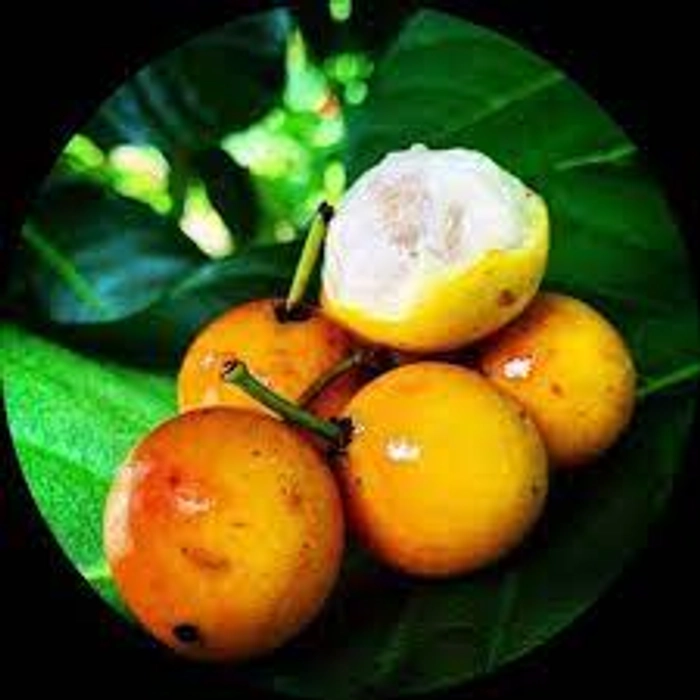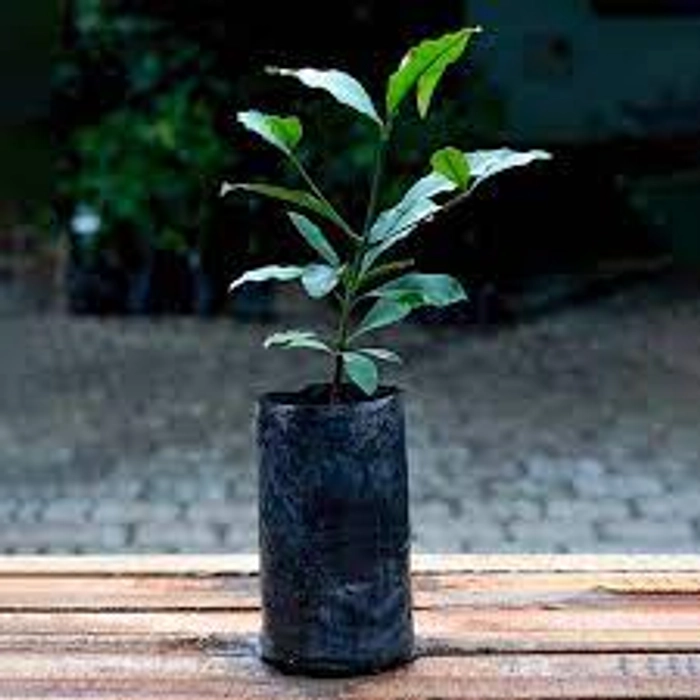Cherry Mangosteen Live Plants (Garcinia Intermedia)
Product description
The cherry mangosteen, scientifically known as Garcinia prainiana, is a tropical fruit tree native to Southeast Asia. It is also known by various common names, including "cambogia" and "button mangosteen." Here's a description of cherry mangosteen live plants:
-
Tree Appearance: Cherry mangosteen trees are small to medium-sized evergreen trees, typically reaching heights of 5 to 10 meters (16 to 33 feet). They have a bushy growth habit with dense foliage.
-
Leaves: The leaves of cherry mangosteen trees are elliptical and glossy green, similar to other Garcinia species. They are arranged in opposite pairs along the branches.
-
Fruit: The cherry mangosteen produces small, round to oval fruit that typically measures about 2 to 4 centimeters (0.8 to 1.6 inches) in diameter. The fruit is reddish or orange when ripe and has a smooth, thin skin. Inside, it contains juicy, translucent white flesh with a sweet and slightly tart flavor. The taste is often described as a blend of flavors, including cherry, lychee, and mangosteen, hence the name "cherry mangosteen."
-
Seed: Each cherry mangosteen fruit contains one or more seeds, which are typically large and brown.
-
Flowers: The tree produces small, fragrant, and attractive flowers that are usually greenish-yellow to pale yellow in color. These flowers are usually solitary or occur in small clusters.
-
Habitat: Cherry mangosteen trees are typically found in lowland tropical rainforests, especially in regions with high humidity and rainfall. They thrive in well-drained, fertile soils.
-
Cultivation: Cherry mangosteen trees can be grown from seeds, but they are sensitive to cold temperatures and require a warm, tropical climate to thrive. They prefer full to partial sunlight and well-drained soil. These trees can take several years to start bearing fruit.
-
Uses: The cherry mangosteen fruit is primarily eaten fresh, and it is prized for its sweet and refreshing taste. It can also be used in fruit salads, desserts, and beverages. In some regions, the fruit is used for its potential medicinal properties.
-
Conservation Status: While cherry mangosteen is not as well-known as other tropical fruit trees like the mangosteen (Garcinia mangostana), it may face conservation concerns due to deforestation and habitat loss in its native range.
-
Other Names: Cherry mangosteen is known by various names in different regions, including "mempelam" in Malaysia and "luk nieng" in Thailand.
In summary, the cherry mangosteen live plant is valued for its small, delicious fruit and is cultivated in tropical regions where it can thrive. It is a lesser-known cousin of the famous mangosteen and is appreciated for its unique flavor and culinary uses.
✦
You might like these
✦










